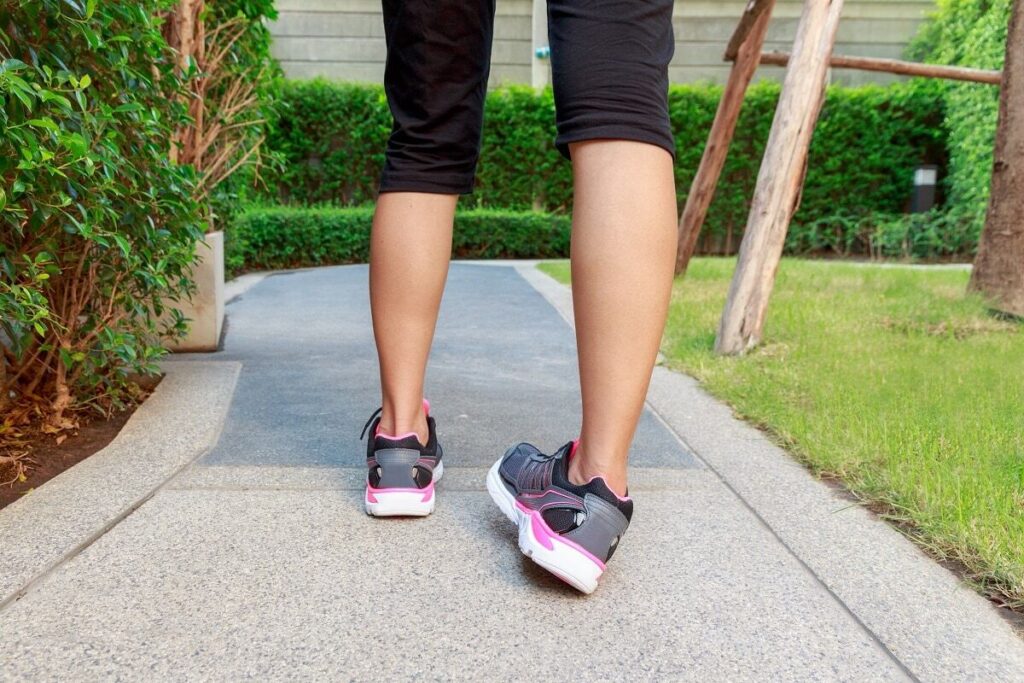
An ankle sprain is one of the most common injuries to the foot and ankle. When your doctor asks you, “twisted swollen ankle“? It is to determine how it happened. This occurs when the foot is twisted inward, towards the opposite foot. This can damage the ligaments that support the ankle joint and create an ankle fracture when severe.
Overview of the swollen twisted ankle sprain.
Ankle sprains can be categorized into three levels depending on the severity.
- Grade 1– The ligaments that support the ankle may be stretched and a small tear of the ligaments may be present.
- Grade 2 The is a more significant tear of the ankle ligaments, meaning 40-60 percent of the ligament is torn.
- Grade 3 This is the most severe type of sprain and total tear of one or more of the ankle ligaments may be present.

How to know which type of sprain you have?
- Grade 1 tear will present with more mild swelling and pain and the symptoms may resolve more quickly. Walking on the foot may cause only mild or moderate pain. Swelling and bruising may be minimal.
- Grade 2 tears will create more pain and swelling. Pain will persist longer along with swelling and weight bearing will be more difficult.
- Grade 3 tear will create a full tear of one or more of the ligaments. During the injury you hear a pop or feel something give. This could be your body’s way of telling you that a ligament was fully ruptured. The pain and swelling will be very severe and will take longer to go away. Also trying to bear weight on the foot may be difficult.
Why do we sprain our ankles?
- Activities – certain activities will make you more prone to ankle sprains. Any activity that requires side to side motion such as soccer, racquet sports, basketball or hiking and walking or running on irregular terrain.
- Foot type – This is the most overlooked issue. Certain foot types may make you more likely to sprain your ankles. Very high arch feet may have a structure that makes an ankle sprain more likely
- Watch your step – Simply being aware of foot placement is important. Many patient will report, stepping on a rock, missing a step, landing wrong all these simply maneuvers can create an ankle sprains.
How will a doctor evaluate your swollen twisted ankle sprain?
- History – how you injured will be important, Did you hear anything pop or snap. How severe is your pain and swelling. Have difficult is it to bear weight.
- X- rays – This is important to rule out any associated fractures in the foot or ankle. Bone injuries may accompany the ankle sprain.
- MRI – This can be used to more thoroughly evaluate the ligaments. It’s the best way to categorize if you have a grade one two or three tear. The more severe the injury the more likely you are to have a grade 3 tear.
Treatments – how should you treat a sprained ankle.
If you have an injured ankle, consider rest, ice, compression and elevation. Many of you have heard the term RICE and this is your first step. These steps may help reduce swelling. So, elevate your ankle and use compression and start applying ice as soon as possible. Depending on the severity of the injury you may consider seeking professional attention. If you’re not sure and are sitting on the fence it’s best to have the injury evaluated by a doctor. Remember that its not always true that if you can walk on a broken bone.
What treatments the doctor may offer for swollen twisted ankle sprains?
The most important take away from this blog are two questions you should ask yourself.
Is this my first ankle sprain and does it seem like its severe, is a potentially a grade three?
Why is this important?
If it’s the first ankle sprain and its a grade 3 tear proper treatment is essential. Oftentimes the doctor will suggest immobilization in a Cam walker for up to four weeks to facilitate the torn ligament to properly repair and reduce pain. If the ligament does not repair properly you may have ankle instability as the strength of the ligament has been compromised.
Immobilization- as was just discussed immobilization especially with a grade three tear should be considered. Even if the tear is not a grade three immobilization for a shorter period of time may get you back to more full activity quicker.
- Physical therapy – This may be useful especially when more fully recovered from the ankle sprain. The physical therapist may recommend exercises to increase muscle strength around the ankle joint.
- Orthotics – custom made inserts to go into your shoes are also very helpful the have a more supportive foundation to stand and giving your body better feedback to foot position. Thereby reducing the number of ankle sprains.
- Anti-inflammatories – Taking an anti-inflammatory may be helpful in the short term to reduced swelling and pain. However long-term use may reduce your body’s reparative processes.
- Surgery – some doctors may advise you to consider surgery especially if its a grade 3 tear. There are also surgeries that can be performed for patients that are chronic ankle sprainers. This involves using other soft tissue structures or in some cases tendons on the outside of the ankle to increase support.
How to avoid ankle sprains?
Make sure you’re wearing appropriate shoes. Broken down shoes that are not supportive may lead to an ankle sprain. If you are hiking on uneven terrain more support may be important and also the composition of the soles. Shoes built for running may not have as grippy of a sole compared to a shoe meant for hiking. Low profile or minimalist shoes. These are important to discuss. As I have personally experienced of these types of shoes when hiking or running on trails.
Many years ago I changed my running habits from running on streets to trails. As a chronic ankle sprainer the idea terrified me, but I did it with the goal of reducing wear and tear on my body. I have been surprised at how few sprains I’ve had, and I attribute to two things. I’ve trained myself to watch where I place my foot with every step I take , as I’m walking on irregular terrain I forced to. Secondly, I feel minimalist or low-profile trail shoes give me better feel of what is beneath my foot and I can adjust accordingly. These types of shoes look like regular running shoe but your foot sits down closer to the walking surface and I encourage you to consider this type of shoe.
Ankle exercises- doing big circles with your ankle can help to strengthen the muscles that support the ankle joint.
Watch where you step. This is a hard one to remember but simply remember to watch your foot placement. This may especially be true when you’re transitioning from walking on sidewalks and streets to hiking on irregular terrain.
So following these suggestions should help you to get back to full activity and help to prevent more ankle sprains in the future.


